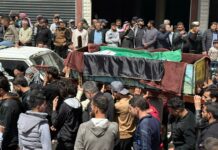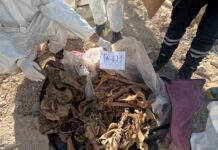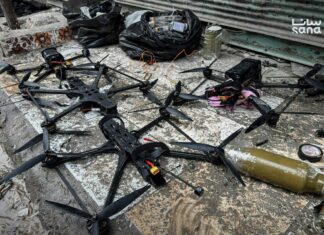
A Syrian government fact-finding committee has concluded that more than 1,400 people were killed during sectarian violence in Syria’s coastal region this March, laying blame on both remnants of the Assad regime and irregular pro-government forces. The committee, formed in March by Presidential Decree, released its findings July 22, drawing cautious praise but also criticism from rights advocates who questioned the accountability process.
The committee’s final report, submitted to President Ahmad al-Sharaa and the Attorney General, documented 1,426 deaths, including 90 women, primarily in Latakia, Tartous and Hama. According to committee spokesperson Yassir al-Farhan, violence began March 6 when former regime loyalists launched coordinated attacks on government sites, killing 238 members of the military and police. Government forces and allied factions launched a swift counteroffensive leading to numerous civilian casualties.
“The violations that occurred between March 7 and 9 were widespread, but not organized,”Farhan said during a press conference in Damascus. He said some fighters acted out of revenge, not ideology, and that many killings took place after active fighting had ended, often during retaliatory searches.
Report Cites State Discipline yet Gaps in Control
The report emphasized that commanders had issued orders to protect civilians and avoid violations. Judge Jumaa al-Anzi, head of the commission, said the panel found no evidence that Syrian military leaders had authorized retaliatory attacks.
Still, the investigation revealed that 200,000 fighters, including irregular militias, flooded into the region, creating chaos. Six hospitals were destroyed, roads were cut off, and dozens of mass graves were uncovered. “Effective state control was partial at best,” the report said, noting the slow integration of militias into the official military structure.
The commission submitted names of 563 suspected perpetrators to the judiciary, including 298 linked to abuses against civilians and 265 accused of attacking state forces. Thirty-seven arrests have been made so far, but no names were released, citing suspects’ legal protections and fear of reprisals.
Rights Groups and International Voices Respond
The Syrian Network for Human Rights (SNHR), which previously documented similar figures, welcomed the report but pressed for stronger judicial independence. “The committee did a good job under tough conditions,” said SNHR director Fadel Abdulghani. “But the responsibility now lies with Syrian authorities to act decisively.”
Abdulghani urged immediate arrests and compensation for victims. He also called for restructuring the judiciary and for full separation from the executive branch to ensure credible prosecutions.
Diana Semaan, Syria researcher at Amnesty International, echoed those concerns. “Acknowledging atrocities is an important step, but without prosecution, there is no justice,” she told Reuters.
Anne Snow, the UK’s Special Representative to Syria, described the report as “a timely and essential commitment,” adding that Britain will closely monitor how prosecutions unfold.
Uncertainty Ahead
The commission’s report is seen as a litmus test for Syria’s transitional leadership. Anzi called the effort “a step into a new era” of transparency, but many remain skeptical. As the presidency reviews the report’s political and legal implications, the world will be watching to see whether truth-telling translates into justice.








